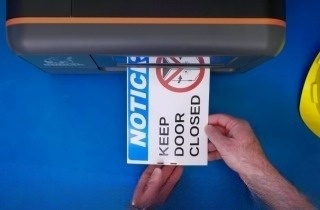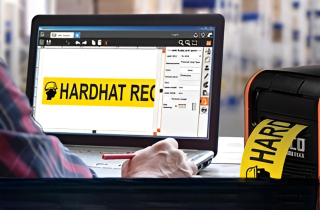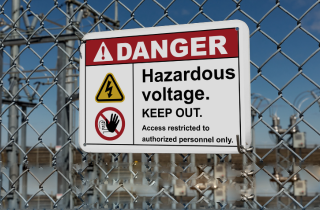Mission-Ready Fire Safety Starts with the Right Exit Signs

Can Reflective Fire Exit Signs Be Used in Blackout or Combat Zones?
Reflective and photoluminescent fire exit signs are effective in blackout or combat zones when they are made from the right materials and designed to withstand stress. Signs must function without electricity, remain visible in smoke or no-light conditions, and comply with military safety standards to be considered reliable in operational environments.
In enclosed military spaces, such as maintenance bays, bunkers, or below-deck compartments, smoke can obscure overhead signage in less than 90 seconds, according to the National Fire Protection Association (NFPA). NFPA 92 notes that smoke layering often reduces visibility near ceilings, reinforcing the importance of low-mounted signage. While publicly cited case studies are limited, field feedback and safety standards from NFPA, Occupational Health and Safety Administration (OSHA), and Department of Defense (DoD) policy consistently support the use of photoluminescent signage as an operational requirement in blackout scenarios.
What Types of Fire Exit Signs Work in Blackout or Combat Zones?
Not all signs perform equally under stress. In blackouts or combat zones, fire exit signage must function independently of power and remain visible in low- or no-light environments. The most effective signs use glow-in-the-dark or reflective technology, or a combination of both.
Each material offers distinct advantages, and the right choice depends heavily on where and how the signage will be used. Understanding these differences is essential for selecting the best solution in high-risk military environments.
Photoluminescent Signs
Photoluminescent signs absorb ambient light and glow in darkness. They are widely used in enclosed military environments where overhead lighting is consistent during normal operations. For example, they are highly effective in base housing corridors, ship compartments, or command posts with reliable daily lighting cycles.
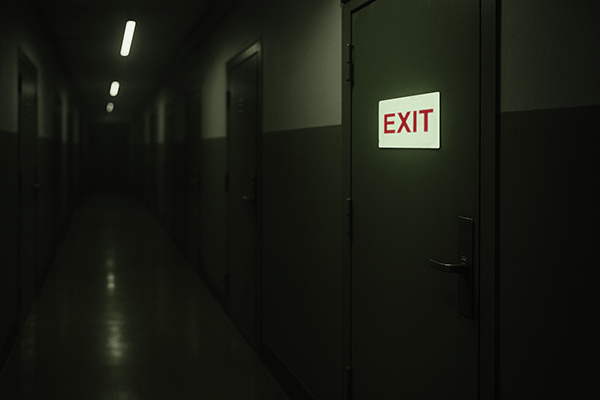
These signs must receive adequate exposure to ambient lights to remain effective during power outages or blackout conditions. While they perform well in consistently lit spaces, their reliability decreases in areas with limited or irregular lighting. In secured rooms, storage compartments, or shelters, photoluminescent signs require planned illumination cycles to remain charged.
To address this, facility managers can implement timed lighting systems or schedule routine lighting during inspections and maintenance checks. According to Underwriters Laboratory (UL) 924, photoluminescent exit signs must be exposed to at least 54 lux of fluorescent, LED, or equivalent ambient lighting for a minimum of 60 minutes to reach a full charge and meet emergency visibility requirements.
- Strengths: Power-independent, ideal for interior use
- Limitations: Require light exposure to remain charged; dim over time in total darkness
Retroreflective Signs
Designed to reflect light back toward its source, retroreflective signs are ideal for use with tactical flashlights or headlamps in the field.
- Strengths: Effective in outdoor or tactical settings where personnel use active lighting
- Limitations: Require a directed light source to be visible; ineffective without it
Hybrid Signs
Hybrid signage combines photoluminescent and retroreflective materials to improve visibility across a range of lighting conditions. This approach provides redundancy and reliability in complex scenarios where visibility may fluctuate.
These materials are effective, but only when signs are positioned where they can actually be seen. That brings us to the next requirement: placement.
Where Should Fire Exit Signs Be Placed in Military Facilities?
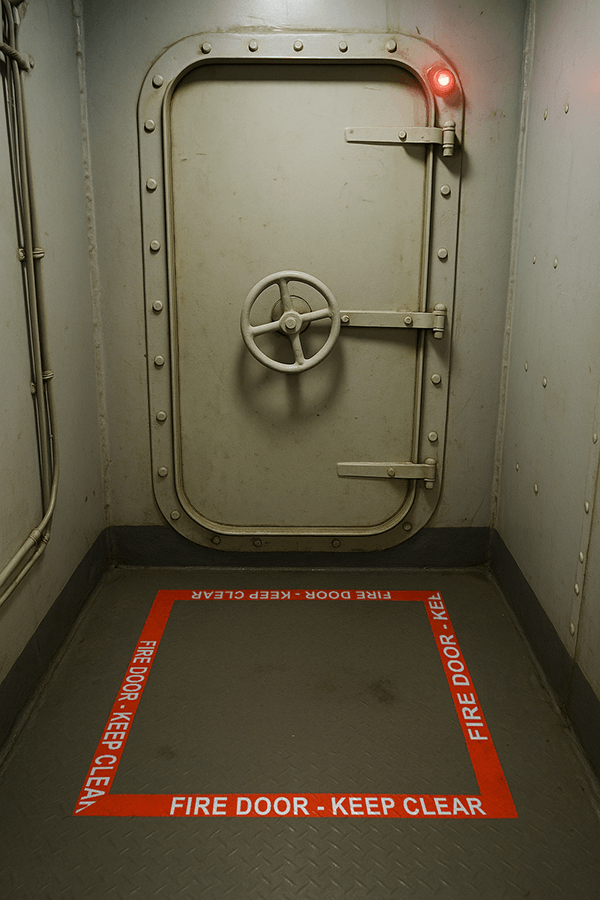
Placement is just as critical as material. Fire exit signs must remain visible during emergencies, not just when inspected during routine safety checks. Placement standards exist for a reason: smoke rises, visibility drops, and panic shortens reaction time.
Improper sign placement is a leading cause of navigation failure during evacuations. Inconsistent mounting heights, unclear directional labeling, and obstructed signage all contribute to delays.
The following strategies are recommended for military facilities and field operations:
- Low-Mounted Signs: Positioned at or below 48 inches to stay visible beneath smoke
- Repetition Along Routes: Placed consistently throughout egress paths to reinforce direction
- Directional Arrows: Used at intersections and decision points
- Permanent Fastening: Mounted with screws or hardware, not adhesives, in high-vibration zones
These guidelines are not suggestions; they are the operational minimum. Placement, however, is only one half of compliance.
What Fire Safety Standards Apply to Military Signage?
Military fire signage must meet both civilian codes and DoD performance criteria. These standards cover visibility, durability, human factors, and environmental resistance.
Failure to meet these standards can result in signage that peels, fades, or fails entirely under stress. In emergency situations, that kind of failure carries unacceptable risk.
Key standards include:
- NFPA 101: Life Safety Code — Governs visibility and placement of exit signage
- NFPA 1500: Standard on Fire Department Occupational Safety, Health, and Wellness Program — Covers fire safety in occupational settings
- MIL-STD-1472: Department of Defense Design Criteria Standard – Human Engineering — Ensures readability and usability under operational conditions
- UFC 3-600-01: Unified Facilities Criteria for Fire Protection Engineering — Outlines DoD-specific fire protection requirements
- ANSI Z535 / ISO 7010: Standards for Safety Symbols and Signage Formatting — Provides harmonized formats for warning labels and icons
Labels and signs used in military environments must also resist fuel, abrasion, UV exposure, extreme temperatures, and salt spray. Legal compliance is just the starting point; true safety comes from real-world performance.
Why Non-Electric Signage Is Critical in Military Fire Response
In blackout conditions or combat situations, illuminated signage can fail instantly. Power loss is common in forward operating environments and can also result from targeted infrastructure attacks. In these scenarios, any signage that relies on electricity is no longer functional.
Photoluminescent and retroreflective signs offer immediate, passive visibility when systems go down. Because they don’t rely on wiring, batteries, or generators, they remain dependable under stress. In high-pressure evacuation scenarios, this reliability directly impacts reaction time, decision-making, and survivability.
DuraLabel Reflective Signage Resources for the Military
In emergency conditions where power may be lost, fire signage provides critical visual guidance for military personnel. Whether stationed on base or operating in the field, signage must provide immediate, durable visibility independent of infrastructure.
DuraLabel offers a full range of high-performance visual communication tools for high-risk military operations. Our reflective and photoluminescent signage meets stringent DoD and NFPA requirements and is engineered to withstand extreme environmental conditions. For mobile teams and multi-site operations, the DuraLabel Toro Max Industrial Sign and Label System allows for rapid, consistent label creation in the field.
To support broader compliance goals, DuraLabel's free Military Labeling Best Practice Guide provides step-by-step instructions for implementing mission-ready visual systems. It includes labeling standards, proper placement, and material recommendations tailored to defense environments.
For additional guidance, download DuraLabel’s free Photoluminescent Safety Signage Guide. This resource explains how to implement glow-in-the-dark signage, align with key safety standards, train staff, and select the right materials to maintain visibility during power outages and low-light conditions.
Have questions about military fire labeling or custom signage for your facility? Call 1-888-789-7964 to speak with a safety specialist.
Read Next:
Related Resources

Special Precautions for Fire Evacuations in Historic Buildings
The Portland Alder Hotel fire in January 2017 displaced almost 100 residents of the historic building. The ...
Read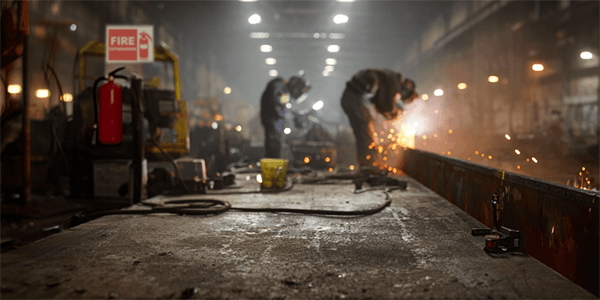
How to Improve Fire Safety with Custom Labels and Signs
Why Does Fire Safety Signage Matter in Every Workplace? Worksites that handle heat, fuel, and high-energy ...
Read
4 Wayfinding Errors and How to Fix Them
Employees should be able to find their way safely and efficiently around the workplace. When crucial signage ...
Read.png)

